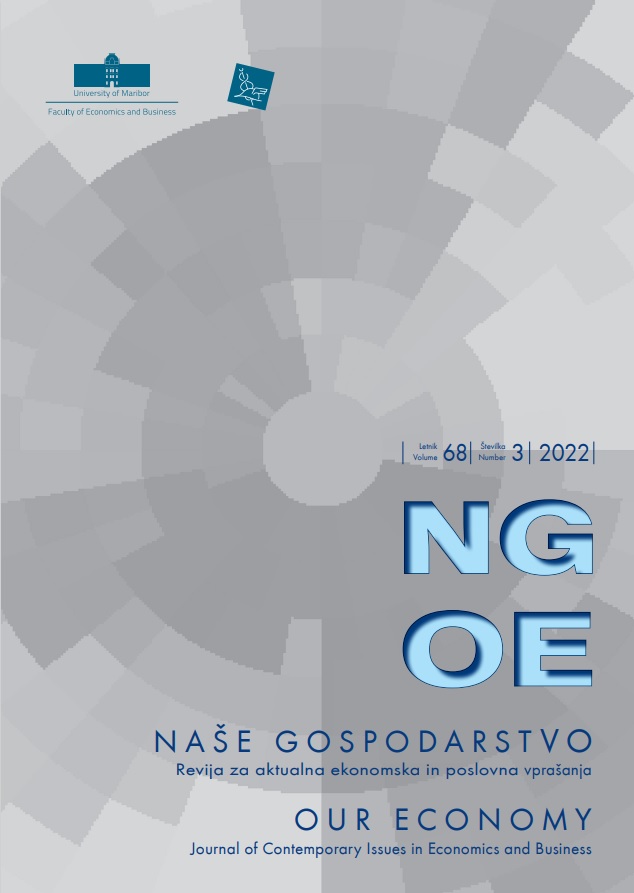Past, Present, and Intended Digitalization around the World: Leading, Catching up, Forging Ahead, and Falling Behind
Keywords:
Digitalization, Adoption of technology, External enabler, Globalization, Inequality, Convergence, DivergenceAbstract
Businesses around the world are rapidly adopting digital technologies. Adoption, though, is not even, but it varies over time and differs from society to society, depending on resources in the ecosystem. This study addresses how past, present, and future digitalization is developing globally and, in each society, depending on its resources. A survey of businesses in 47 countries, conducted by the Global Entrepreneurship Monitor in 2021, provides national-level measures of digital technology adoption before and during the pandemic and the intention for adoption in the near future. Adoption of digital technology is found to vary significantly across both time and place. Before the pandemic, adoption was concentrated in the wealthiest societies. The pandemic was an external enabler, pushing less digitalized societies to catch up, independent of national economies, thus entailing some convergence. The early pandemic has been followed by intentions to digitalize, which differ widely, entailing some divergence. Intentions are strong in some societies that are forging ahead, but they are weaker in some less-digitalized and low-income societies that may be falling behind. The findings contribute to understanding digitalization as a global phenomenon and the pandemic as an external enabler that has promoted catching up and convergence in digitalization. Still, recovery is uneven and entailing divergence, as some societies are forging ahead while others are falling behind.
Downloads
References
Abramovitz, M. (1986). Catching up, forging ahead, and falling behind. Journal of Economic History, 46(2), 385-406. DOI: https://doi.org/10.1017/S0022050700046209
Agarwal, R., & Audretsch, D. (2020). Looking forward: Creative construction as a road to recovery from the COVID-19 crisis. Strategic Entrepreneurship Journal, 14, 549–551. DOI: https://doi.org/10.1002/sej.1378
Amankwah-Amoah, J., Khan, Z., Wood, G., & Knight, G. (2021). COVID-19 and digitalization: The great acceleration. Journal of Business Research, 136, 1, 602-611. DOI: https://doi.org/10.1016/j.jbusres.2021.08.011
Autio, E., R. Mudambi, & Yoo, Y. (2021). Digitalization and globalization in a turbulent world: Centrifugal and centripetal forces. Global Strategy Journal, 11, 3-16. DOI: https://doi.org/10.1002/gsj.1396
Bosma, N. (2013). The Global Entrepreneurship Monitor (GEM) and its impact on entrepreneurship research. Foundations and Trends in Entrepreneurship, 9(2), 143-248. DOI: https://doi.org/10.1561/0300000033
Calvo, N., T. Schøtt, A. Fernandez Laviada, M. Samsami, & Barros, E. (2022). The Digitization of Spanish companies during the pandemic. Differences between CCAA. Cuadernos de divulgacion cientifica 1/2022. RED GEM Espana. Retrieved from http://www.gem-spain.com.
Cruz-Jesus, F., Oliveira, T., Bacao, F., & Irani, Z. (2017). Assessing the pattern between economic and digital development of countries. Information Systems Frontiers, 19(4), 835–854.
Davidsson, P., Recker, J., & von Briel, F. (2021). COVID-19 as external enabler of entrepreneurship practice and research. Business Research Quarterly, 24(3), 214-223. https://doi.org/10.1177/23409444211008902
Dencker, J. C., Bacq, S., Gruber, M., & Haas, M. (2021). Reconceptualizing necessity entrepreneurship: A contextualized framework of entrepreneurial processes under basic needs. Academy of Management Review, 46(1), 60–79. DOI: https://doi.org/10.5465/amr.2017.0471
Global Entrepreneurship Monitor. (2022). Global Entrepreneurship Monitor 2021/2022 Global Report: Opportunity Amid Disruption. London: GEM.
Hai, T. N., Van, Q. N., & Thi Tuyet, M. N. (2021). Digital transformation: Opportunities and challenges for leaders in the emerging countries in response to Covid-19 pandemic. Emerging Science Journal, 5, 21–36. DOI: https://doi.org/10.28991/esj-2021-SPER-03
Karim, M.S., S. Nahar, & M. Demirbag. (2022). Resource-based perspective on ICT use and firm performance: A meta-analysis investigating the moderating role of cross-country ICT development status. Technological Forecasting and Social Change, 179, 121626.
Kraus, S., Jones, P., Kailer, N., Weinmann, A., Chaparro-Banegas, N., & Roig-Tierno, N. (2021). Digital transformation: An overview of the current state of the art of research, SAGE Open, July-September 2021, 1-15. https://doi.org/10.1177/21582440211047576
Lafuente, E., Acs, Z. J., Sanders, M., & Szerb, L. (2020). The global technology frontier: Productivity growth and the relevance of Kirznerian and Schumpeterian entrepreneurship. Small Business Economics, 55, 153–178. DOI: https://doi.org/10.1007/s11187-019-00140-1
Leão, P., & da Silva, M. M. (2021). Impacts of digital transformation on firms’ competitive advantage: A systematic literature review. Strategic Change, 30, 421-441. DOI: https://doi.org/10.1002/jsc.2459
Martin, R., & Sunley, P. (2020). Regional economic resilience: Evolution and evaluation. In Handbook on Regional Economic Resilience. Cheltenham, UK: Edward Elgar Publishing. DOI: https://doi.org/10.4337/9781785360862.00007
Nambisan, S., & Baron, R.A. (2019). On the costs of digital entrepreneurship: Role conflict, stress, and venture performance in digital platform-based ecosystems. Journal of Business Research, 125, 520-532. DOI: https://doi.org/10.1016/j.jbusres.2019.06.037
Futonge Nzembayie, K., & Buckley, A. (2022). Digital Entrepreneurship: Disruption and New Venture Creation. Cheltenham: Edward Elgar Publishing.
OECD. (2021). The digital transformation of SMEs. Paris: OECD Publishing. DOI: https://doi.org/10.1787/bdb9256a-en
Solberg, E., Traavik, L.E.M., & Wong, S.I. (2020). Digital mindsets: recognizing and leveraging individual beliefs for digital transformation. California Management Review, 62, 4, 105–124. DOI: https://doi.org/10.1177/0008125620931839
Song, A. K. (2019). The digital entrepreneurial ecosystem: A critique and reconfiguration. Small Business Economics, 53(3), 569–590. https://doi.org/10.1007/s11187-019-00232-y
Stam, E. (2021). A culture of ambitious entrepreneurship. Utrecht: Utrecht School of Economics Research Institute. Working Paper Series 21-12. Retrieved from https://dspace.library.uu.nl/handle/1874/416937
Stam, E., & Van de Ven, A. (2019). Entrepreneurial ecosystem elements. Small Business Economics, 56, 2, 809-832. DOI: https://doi.org/10.1007/s11187-019-00270-6
Sussan, F., & Acs, Z. J. (2017). The digital entrepreneurial ecosystem. Small Business Economics, 49(1), 55–73. DOI: https://doi.org/10.1007/s11187-017-9867-5
Szerb, L., Komlosi, E., Acs, Z. J., Lafuente, E., & Song, A.K. (2022). The Digital Platform Economy Index 2020. SpringerBriefs in Economics, No. 978-3-030-89651-5, July. DOI: https://doi.org/10.1007/s11187-017-9867-5
World Bank. (2016). World Development Report 2016: Digital Dividends. Washington, DC: World Bank.
Wurth, B., Stam, E., & Spigel, B. (2021). Toward an entrepreneurial ecosystem research program. Entrepreneurship Theory and Practice, 46(3), 729-778. DOI: https://doi.org/10.1177%2F1042258721998948.
